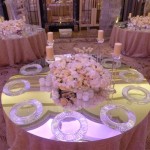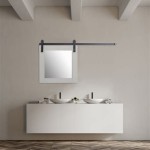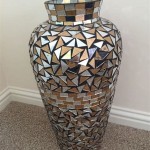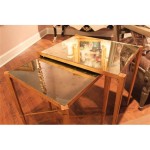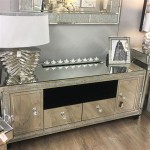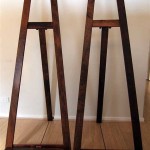Can a Vanity Mirror Be Wider Than the Wall?
The question of whether a vanity mirror can be wider than the wall it's mounted on may seem paradoxical. However, the answer depends on clarifying what "wider" means in this context. A mirror's physical frame cannot exceed the wall's width without extending beyond its edges, which is generally impractical and aesthetically undesirable. However, the *reflected image* in the mirror can create the illusion of a wider space.
Understanding Mirror Reflections and Perceived Width
Mirrors reflect light, creating virtual images of the objects placed before them. These images aren't physical entities but optical illusions. Depending on the mirror's size, shape, and placement, the reflected image can encompass a wider field of view than the mirror's physical dimensions. This principle is key to understanding how a mirror can seemingly be "wider" than the wall.
Strategies for Creating the Illusion of Width
Several techniques can be employed to make a mirror appear wider than the wall it's mounted on, primarily focusing on manipulating the reflected image:
Using Multiple Mirrors or Mirror Panels
One effective method involves using multiple mirrors, either arranged as a single large unit with thin joins or strategically placed as individual panels. This arrangement expands the reflected view, creating a sense of spaciousness that transcends the limitations of a single, smaller mirror. The reflected image can then encompass more of the room, creating the illusion of a wider area, even if the individual mirrors or the overall panel doesn't physically exceed the wall's width.
Exploiting Wall Angle and Placement
Positioning a mirror on a wall angled relative to the viewer can also contribute to a perception of increased width. The angled mirror can reflect parts of the room not directly in front of it, broadening the reflected view and thus creating a sense of greater width. This technique is particularly effective in smaller spaces where maximizing the perceived area is crucial.
Considering Curved or Convex Mirrors
Curved or convex mirrors are designed to provide a wider field of view than flat mirrors. The outward curve distorts the reflected image, allowing the viewer to see more of the surrounding area. While offering a broader perspective, it's important to note that convex mirrors also make objects appear smaller than their actual size. This can be advantageous in certain situations, like security monitoring, but less desirable for tasks requiring accurate size perception, such as applying makeup.
The Role of Lighting in Perceived Width
Proper lighting plays a crucial role in enhancing the illusion of width. Well-placed lighting fixtures can brighten the reflected image, making the space appear larger and more open. Additionally, lighting can minimize shadows and dark corners, further contributing to the perception of a wider area. Strategic placement of sconces or overhead lighting can optimize the reflective qualities of the mirror and enhance its perceived width.
Framing and Its Impact on Perceived Size
While the frame itself cannot make the mirror physically wider than the wall, the frame's design can influence perception. A minimalist frame, or even a frameless mirror, tends to blend seamlessly with the wall, emphasizing the reflected image and creating a sense of expanded space. Conversely, a large, ornate frame can draw attention to the mirror's physical limits, potentially diminishing the illusion of width.
The Importance of Proportion and Scale
Choosing a mirror size proportionate to the wall and the surrounding furniture is crucial. A mirror that is too small may appear lost on a large wall, while an excessively large mirror, even if within the wall's physical dimensions, can overwhelm the space. Careful consideration of scale and proportion is essential for achieving a harmonious and aesthetically pleasing result.
Ultimately, the perception of a vanity mirror being "wider" than the wall relies on optical illusions and design techniques. While physically exceeding the wall's boundaries is not feasible, creating the impression of a broader space is achievable through careful planning and execution of these strategies.

The Bathroom Mirrors Buyer S Guide Big

Should A Bathroom Mirror Be Wider Than The Vanity Aquarina

How Big Should Your Bathroom Mirror Be

How To Choose A Bathroom Mirror Houzz

The Bathroom Mirrors Buyer S Guide Big

How To Choose A Bathroom Mirror Houzz

How To Pick And Hang The Perfect Bathroom Mirror Roomhints

A Bathroom Wall Mirror Shouldn T Be Wider Than The Sink And It S Common For To Exact Same Widt Vanity Units

Select A Bathroom Mirror With Designer S Eye Sinkology

Bathroom Mirror Ideas Fill The Whole Wall

